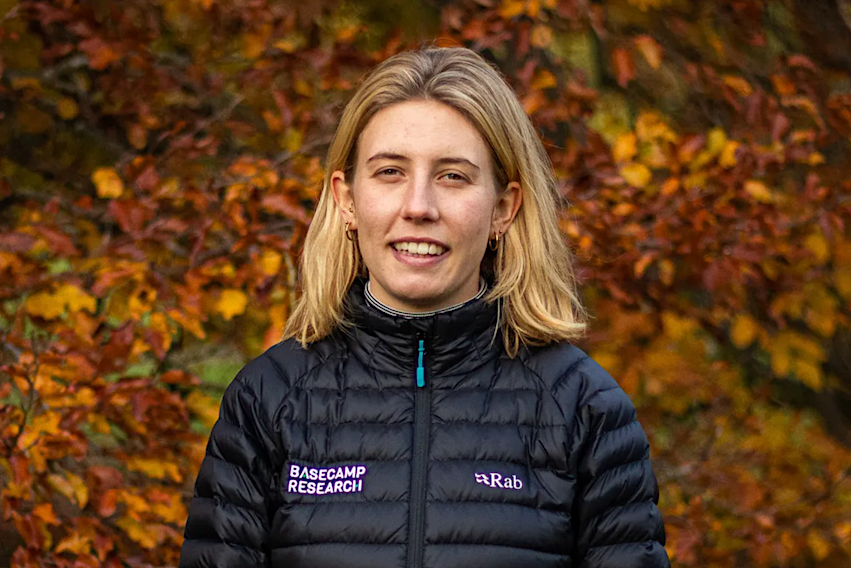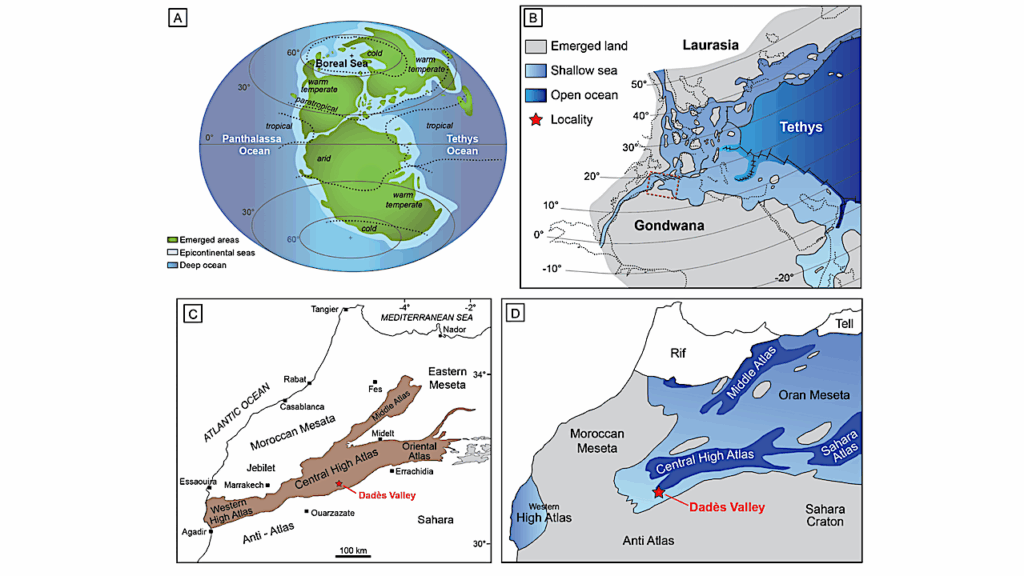Exploring The Undiscovered Potential Of Deep Sea Microbial Ecosystems And Establishing Sustainable Thresholds For Their Preservation

We’re publishing this article today in advance of a COP28 talk entitled “Ocean biodiscovery, capacity development and equitable access to ocean biodiversity data” that Emma Bolton, Ocean Research Lead at Basecamp Research, will be giving at the OceanX x Ocean Decade Pavilion on Monday 11th December 2023.
At COP28, Emma will be speaking more generally about how the oceans as a whole have a threshold of harm in response to the current climate crisis that is still not completely identified or understood — and below are her thoughts on how international experts can contribute to outlining the thresholds of harm to deep-sea ecosystems.
In October, on behalf of Basecamp Research, I attended a 4-day Ocean Solution Accelerator, run by the incredible Leslie Smith from iDOOS (Implementing a Deep Ocean Observing Strategy) network-of-networks funded by the National Science Foundation. The workshop brought together an international and diverse group of experts in San Diego to work together to accelerate solutions related to the deep sea. I joined a team, co-led by the Crustal Ocean Biosphere Research Accelerator (COBRA) team, to compose a white paper to inform the International Seabed Authority’s regulations and policies regarding the thresholds of harm for deep-sea mining. This article speaks to my experience of attending this accelerator and the immense privilege of contributing to such a transformative initiative.
Rising Industrial Interest in Deep-Sea Mining
In a rapidly evolving world, the balance between human progress and environmental conservation has never been more critical. Mitigating climate change depends unambiguously on transitioning away from fossil fuels. One significant opportunity for this is to increase utilisation of electric vehicles (EVs) that can be run off of renewable energies. However, this opens up new questions, as increased demand for EV batteries may create pressure to source rare metals such as cobalt (Co), manganese (Mn), and nickel (Ni).
These rare metals may be abundant in deep sea polymetallic nodules: unique undersea habitats that are host to understudied ecosystems. Early culturing and microscopy studies suggest that polymetallic nodules and other seafloor rocks are at least partially consisting of living organisms (Zhang et al., 2023) and the benefits to humanity that can be obtained from these ecosystems (“provisioning services”) on a microbial level are only just starting to be understood (Orcutt et al., 2020). With the advance in deep-sea mining technologies, understanding the impact of mining activities on these ecosystem services will be absolutely critical to the future of our ocean’s conservation.
The International Seabed Authority (ISA) plays a pivotal role by regulating deep-sea mining activities in international waters. One mechanism is through implementing harm thresholds to deep-sea ecosystems. A key element to aiding the ISA in these goals is the development of regulatory frameworks that take into account diverse stakeholder perspectives and expertise in order to enable critical transitions away from fossil fuel-driven economies without causing irreversible loss of biodiversity and habitat degradations.
The Importance of Data for Policy Making
Research into the impacts of deep-sea mining (and therefore the policy surrounding it) is quite nascent Amon et al., 2022), especially when relating to the thresholds of harm to microbial ecosystems in the deep sea. Conscious that our efforts at the October 2023 Ocean Solution Accelerator could directly influence the policies governing an industry as critical as deep-sea mining was not lost on the team, it quickly became apparent to all attendees that effective regulations require a much greater understanding than we currently hold.
Every word, every number, and recommendation in our white paper will hold the potential to shape the future of deep-sea mining and the impact it has on these ecosystems. Critical to defining the impact of deep sea mining are robust and reproducible methods for characterising deep-sea environments. One of the stronger recommendations for this delineation was metagenomic sequencing analyses.
Biospheres such as the deep sea ecosystems discussed above are not only extremely rare and unique but also extremely ancient in their evolution. This combination of factors creates a habitat that is not only understudied and poorly understood, but also represents a nearly inexhaustible source of genomic innovation that is yet to be untapped. An early paper reported that the microbial communities of deep-water masses of the North Atlantic and diffuse flow hydrothermal vents are two orders of magnitude more complex than previously reported for any microbial environment (Sogin et al., 2006). This puts into context the exponential capacity of the provisioning services of these ecosystems when it comes to finding novel enzymes in these habitats.
The services that microbial ecosystems provide span three main groups: provisioning, regulating and supporting. The microbial ecosystem further contributes to multiple services within each of these three groups, varying from maintaining oxygen concentration in waters below 300m deep to capturing carbon for climate regulation and regulating the health of deep-sea host organisms that require obligate symbiosis, which means species that cannot survive without the other (Simon-Lledó et al. 2019).
At present, there are large scientific gaps relating to the effective management of these ecosystems in response to deep-sea mining (Amon et al., 2022). Since the advent of deep-sea mining there has been an increased effort from both industry and academics to research the deep sea, however closing these knowledge gaps is a monumental task that may not be complete prior to the ISA’s implementation of deep-sea mining regulations. Therefore the Ocean Accelerator provides critical collaborative thinking space to address these knowledge gaps and create an informative document to submit to the ISA for policy making.

Emma Bolton, now Ocean Research Lead at Basecamp Research, carrying out marine research with the British Antarctic Survey in the Southern Ocean over the Antarctic winter. (Photo credit: Joseph Marlow)
A Focus on Bioprospecting
Central to our discussions during the workshop was the exploration of bioprospecting in the deep sea — an industry with untapped potential and unparalleled ecological significance. Bioprospecting holds the promise of uncovering novel genetic resources and bioactive compounds from the depths of our oceans, which could revolutionise fields from medicine to biotechnology. Balancing this promise with environmental sustainability was our paramount concern.
This concern is also one of the main focuses of our Global Research and Biodiversity Partnerships Programme. We build access and benefit sharing partnerships that allow biodiversity guardians to understand the value in their biodiversity and the importance around preserving these environments. When it comes to samples collected beyond national jurisdiction we act in the spirit of the new United Nations BBNJ “Hight Seas” Treaty.
To inform the white paper, I shared my first-hand experiences from working on the ground with Basecamp Research’s biodiversity partners. In each of our collaborations, such as with Pollino National Park in Italy, we share genomic diversity data that helps to inform conservation research and highlights the value of carrying out biodiversity analysis. This resonated with the deep-sea research community as we still have much to learn about the best ways to scalably monitor diversity, as well as the value of microbial biodiversity of deep sea ecosystem services, especially to predict potential for bioprospecting in these unique habitats.
The Power of Collaboration for International Regulation
With the workshop drawing on experts from around the world, each attendee’s unique regional perspective could be heard throughout. It emphasised strongly the interconnectedness of our oceans and the need for international cooperation in regulating this industry, massively highlighting the importance of the new BBNJ Treaty.
In addition to global diversity, the workshop highlighted diversity of stakeholders’ backgrounds, bringing together scientists, academics, environmentalists, resource managers, and industry representatives from all stages of their careers. This diverse group fostered an environment where solution-focused ideas were exchanged and perspectives were challenged. The scientific, environmental, and socio-economic aspects of deep sea mining were all discussed, to work towards a comprehensive understanding of the industry’s complexities. This depth of knowledge equipped us to make informed decisions and recommendations in our white paper.
It was inspiring and incredible to be involved and surrounded by a collective group, all dedicated to the preservation of our oceans and the sustainable utilisation of their marine genetic resources (MGR’s).
The culmination of our week’s work was a road map for a white paper outlining the thresholds of harm to microbial ecosystem services in the deep sea. This paper will synthesise our collective knowledge and recommendations on this subject. The team continues to work on this effort after the conclusion of the workshop, with a goal to publish the findings in an open access paper. We feel this also helps with transparency, ensuring that our findings are accessible to a global audience of stakeholders.
Continuing the Conversation at COP28
Building on the momentum of the accelerator workshop, I am eager to bring this insight to COP28 to engage with thought leaders there who are innovating on ways to bring electric vehicles, novel renewables, and countless other emergent technologies into play to abate the rising climate crisis. From sequestering carbon, to being a potential source of critical metals for batteries, to supporting a rich diversity of life encoding novel genetic resources that may offer as-yet-unimagined solutions to the challenges posed by changing climates, the world’s oceans can be an incredible resource in our efforts to stem the tide of climate change.
Basecamp Research is committed to using our biodiscovery and design work to develop novel solutions for climate challenges. Simultaneously, we are eager to share data back from our global sequencing campaigns to drive valuable insights into the unexplored diversity of unique habitats such as deep sea sediments, contributing to informed decision-making on how to best protect biodiversity and climate. If you are working on either end of this spectrum, please reach out to me directly on LinkedIn, or by email to biodiversity – at – basecamp-research.com.
About the author

Emma Bolton
Emma Bolton is Ocean Research Lead at Basecamp Research, where she has conducted over 50 expeditions around the world using cutting-edge DNA technologies to discover new proteins and enzymes from nature. She previously worked as a marine scientist for the British Antarctic Survey, including a 20-month deployment to Antarctica as a scientific diver, carrying out marine and climate change research and working on the most long-term monitoring programme in the Southern Ocean.
References
Diva J. Amon, Sabine Gollner, Telmo Morato, Craig R. Smith, Chong Chen, Sabine Christiansen, Bronwen Currie, Jeffrey C. Drazen, Tomohiko Fukushima, Matthew Gianni, Kristina M. Gjerde, Andrew J. Gooday, Georgina Guillen Grillo, Matthias Haeckel, Thembile Joyini, Se-Jong Ju, Lisa A. Levin, Anna Metaxas, Kamila Mianowicz, Tina N. Molodtsova, Ingo Narberhaus, Beth N. Orcutt, Alison Swaddling, Joshua Tuhumwire, Patricio Urueña Palacio, Michelle Walker, Phil Weaver, Xue-Wei Xu, Clement Yow Mulalap, Peter E.T. Edwards, Chris Pickens, Assessment of scientific gaps related to the effective environmental management of deep-seabed mining, Marine Policy, Volume 138, 2022, 105006, ISSN 0308–597X, https://doi.org/10.1016/j.marpol.2022.105006
Orcutt, B. et al., 2020, Impacts of deep-sea mining on microbial ecosystem services, Limnology and Oceanography, 65, 7, 1489–1510. https://doi.org/10.1002/lno.11403
Simon-Lledó, E., Bett, B.J., Huvenne, V.A.I., Schoening, T., Benoist, N.M.A. and Jones, D.O.B. (2019), Ecology of a polymetallic nodule occurrence gradient: Implications for deep-sea mining. Limnol Oceanogr, 64: 1883–1894. https://doi.org/10.1002/lno.11157
Sogin, M. L, Morrison, H. G., Huber, J. A. & Hindi, G. J., 2006, Microbial diversity in the deep sea and the underexplored “rare biosphere”, PNAS, 103 (32) 12115–12120. https://doi.org/10.1073/pnas.0605127103
Zhang, D., Li, X., Wu, Y. et al. Microbe-driven elemental cycling enables microbial adaptation to deep-sea ferromanganese nodule sediment fields. Microbiome 11, 160 (2023). https://doi.org/10.1186/s40168-023-01601-2
Astrobiology, genomics,








